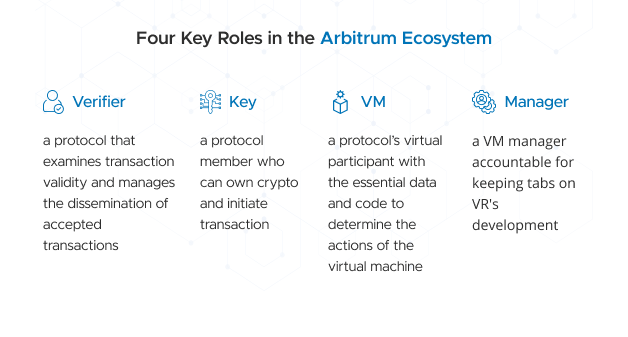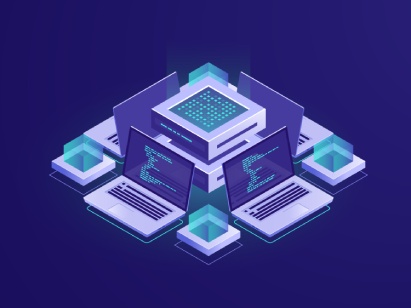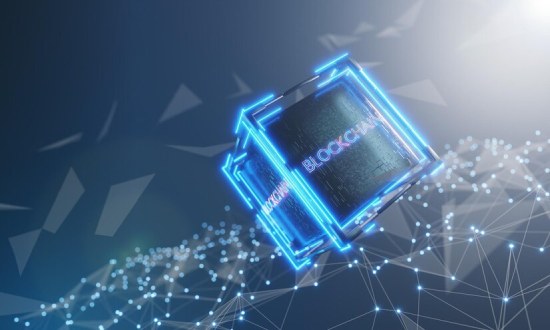-
Arbitrum blockchain has created a prominent niche in the ever-changing world of blockchain protocols. It has claimed a significant market share due to the increasing need for Ethereum rollups. Arbitrum blockchain development services aim to streamline transactions and improve the scalability of the Ethereum network.
In this article, we will explore this layer 2 (L2) scaling protocol and more.
Arbitrum Blockchain
Arbitrum is a well-known L2 solution for Ethereum that addresses network congestion issues. Ethereum delegates some tasks to side chains, blockchains created on top of the mainnet. This way Arbitrum helps to tackle the scalability issues of Ethereum.
This Ethereum virtual machine (EVM) compatible protocol enables coders to run unmodified EVM contracts to ensure accurate results.
This protocol uses optimistic rollups to enhance transactions per second (TPS) by grouping transactions. It minimizes gas fees on the Ethereum blockchain.
Founders integrated Arbitrum into multiple decentralized finance (DeFi) protocols, including Abracadabra, Curve, and SushiSwap.
Check It Out | zkEVM | Boosting Ethereum's Scalability
How Does Arbitrum Work

Arbitrum utilizes an optimistic roll-up method to handle Ethereum transactions and settles them on a sidechain before reporting back to the mainnet. Rollups are a technique to compress blockchain transactions by consolidating batches into a single transaction. Optimistic rollups assume all transactions are valid but have a dispute resolution mechanism in case of fraudulent behavior.
Arbitrum settles optimistic rollups on its proprietary sidechain connected to Ethereum. The protocol gathers transactions, settles them on its sidechain, and sends the data to the mainnet. Validators stake ETH (Ether) to confirm transactions of a block.
Suggested Post | Comprehending ZK Rollups | Layer 2 Scaling Solutions
Benefits of Arbitrum
Here are the following benefits of the Arbitrum blockchain:
Minimum Cost
One of the benefits of Arbitrum is its low gas fees. This protocol minimizes Ethereum's network congestion and thereby reduces the gas fees in the blockchain.
Trustless Security
Arbitrum blockchain development provides the benefit of trustless security due to the Ethereum mainnet. This aspect allows interoperability between Layers 1 and 2.
High EVM Compatibility
Developers can build on Arbitrum as it is compatible with EVM at the bytecode level. It means that programming languages like Solidity and Vyper can be compiled into EVM, making development easy. It eliminates the need to learn a new language before developing on Arbitrum.
Scalability
Arbitrum blockchain development enhances throughput and efficiency by relocating the computation and storage of contracts from the mainnet.
Also, Visit |Layer 2 Blockchain Scaling Solutions | Resolving Scalability Issues
Pros of Arbitrum Blockchain Development
The following are the features of the Arbitrum blockchain:
Optimistic Rollups Technology
The Arbitrum network utilizes optimistic roll-up technology. Developers created this technology for another L2 network known as Optimism. Arbitrum developers have enhanced this technology by incorporating multi-stage anti-fraud protection. This advancement is more efficient than the one-stage protection utilized by Optimism as it uses low gas.
ARB Token
ARB token, the utility token of Arbitrum, operates as the governance token of the Arbitrum DAO. Holders can build and vote on governance proposals.
Largest L2 Scaling Solution
Arbitrum is currently the largest L2 scaling solution for Ethereum. It has a market share of over 50% and its projects' market capitalization exceeds $3.3 billion.
Over 300 crypto projects are currently part of the Arbitrum ecosystem. It supports many wallets, and over 30 cross-chain bridges operate with it. Furthermore, nearly twelve major centralized exchanges have listed the ARB token.
You May Also Like | Solutions to Address the Blockchain's Scalability Trilemma
Smart Contract on Arbitrum
Arbitrum utilizes smart contracts that function similarly to those on other blockchains. These self-executing contracts have their terms written into code.
Arbitrum has designed its smart contracts to be highly efficient and scalable, ultimately providing quicker and more cost-effective transaction execution. Arbitrum's optimistic rollup architecture made it possible.
Also, Check | A Definitive Guide to Smart Contract Development Tools
Decentralized Applications (dApps) on Arbitrum
Arbitrum can work with various Ethereum L2 solutions and the wider Ethereum ecosystem, allowing seamless integration with other networks and applications built on Ethereum.
For instance, a dApp developer creates an application on Arbitrum that requires a specific token unavailable on the network. He/she can effortlessly bridge the token from the Ethereum mainnet or another L2 network and add it to their application.
Additionally, Arbitrum supports the same programming languages and smart contract standards as Ethereum. So, the network makes it simple for developers to migrate their existing applications and contracts to the network. This compatibility with the broader Ethereum ecosystem facilitates communication and integration between different networks and applications.
Explore More | A Comprehensive List of Top dApp Development Platforms
NFT Support on Arbitrum
Arbitrum supports the following non-fungible tokens (NFTs):
- Art NFTs: Art NFTs are art pictures minted onto a blockchain. They may include physical as well as digital artworks.
- PFP (profile picture) NFTs: PFP NFTs are unique digital items that individuals can utilize as profile pictures across social media platforms. Additionally, they may give NFT holders access to a group or community.
- Gaming NFTs: Gaming NFTs are digital assets in gaming and metaverses. They may include any virtual creation, such as skins, maps, tickets, characters, and collectibles.
- Music and Media: Music NFTs represent ownership of music or related content. They include audio and visual components and may offer access to a larger online community.
- Virtual Land NFTs: In a metaverse, gamers can purchase digital lands. They can tokenize these lands to make virtual land NFTs.
- Membership NFTs: These NFTs give users access to a utility, experience, or community.
Read More About Real Estate NFTs
Summing Up
From high speed to low transaction charges, Arbitrum blockchain development can offer various benefits to Ethereum users. Since the platform supports all Ethereum-based projects, it is easier to switch to this platform. If you wish to develop a project based on the Arbitrum blockchain, connect with our blockchain developers today.

Our Offices
INDIA
Emaar Digital Greens, Sector 61,
Gurugram, Haryana
122011.
Welldone Tech Park,
Sector 48, Sohna road,
Gurugram, Haryana
122018.















